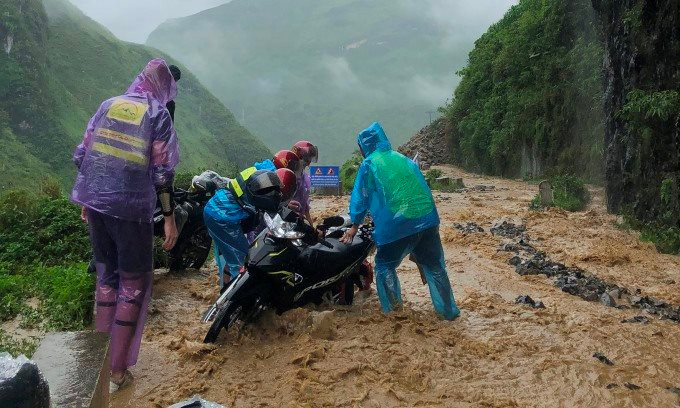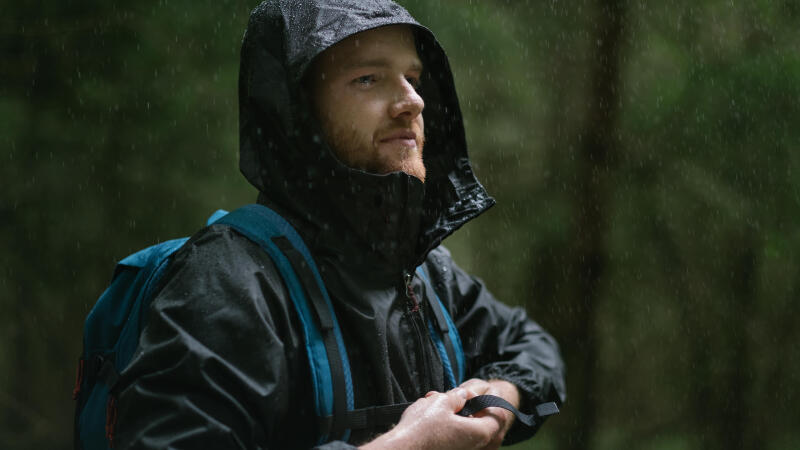Master the Ha Giang Loop in Rainy Season 2025: Self-Ride Guide with 20+ Safety Tips
By Thuy Linh
Post Views: 37
The Ha Giang Loop is one of Vietnam’s most breathtaking journeys—a winding route of mountain passes, limestone cliffs, and terraced valleys stretching across the country’s remote northern frontier. Every year, thousands of travelers take on this adventure, lured by its raw beauty and the thrill of riding through a land where the clouds kiss the hills.
But what happens when the rain arrives?
Riding the Ha Giang Loop during the rainy season (from May to September) is a completely different experience. The mist rolls in, the roads glisten, and the valleys echo with the sound of rushing water. It’s magical—but it can also be treacherous if you’re not prepared.
This guide will walk you through everything you need to know about tackling the Ha Giang Loop safely in the rain—from what to wear and how to ride, to what dangers to look out for. Whether you’re an experienced rider or a first-time adventurer, these 20+ tips will help you stay safe and make the most of your trip in 2025.

Why Is the Ha Giang Loop Riskier in the Rain?
On a sunny day, the Loop is already challenging: sharp curves, steep ascents, and narrow cliffside roads demand constant attention. Add tropical downpours, and the difficulty multiplies. Rain reduces traction, blurs your vision, and increases stopping distances.
Slippery patches form where oil has mixed with water. Painted lines, metal bridges, and wet leaves turn into ice-like traps. Landslides may spill rocks across the road. Even a light drizzle can hide deep potholes beneath puddles.
Riding here isn’t just about skill—it’s about awareness, patience, and preparation.

Common Rainy Season Hazards in Ha Giang
Understanding the road’s behavior in the rain is your first defense:
Oil Slicks & Rainbow Sheens – Fuel drips from trucks create slippery rainbow films after the first rain. Avoid accelerating or leaning hard over these patches.
Painted Road Lines – White and yellow markings get incredibly slick. Cross them upright, avoid braking on top.
Deceptive Puddles – A shallow-looking puddle might be a crater deep enough to twist your rim. Approach slowly or steer around.
Mud and Loose Gravel – Washed down from the hillsides, these create mini-skid zones on turns.
Flash Flood Crossings – Brown torrents can suddenly appear on mountain roads. Don’t force your bike through fast-moving water.
Fallen Branches & Debris – Storm winds often scatter bamboo, rocks, or tree limbs across the Loop. Keep scanning the road ahead.

Pre-Ride Preparation: Get Your Bike Rain-Ready
Your bike is your lifeline on the Ha Giang Loop—treat it that way. Before setting off, make sure:
Tires: Have at least 2–3 mm tread depth. Slightly lower pressure than normal can improve wet traction.
Brakes: Inspect pads for wear. Test both front and rear brakes before departure.
Lights & Visibility: Ensure headlights, brake lights, and turn signals all work. Add reflective tape if possible.
Chain & Lubrication: Wet roads wash away chain oil—lube up before and after each day’s ride.
Leaks & Loose Parts: Oil or coolant leaks become far more dangerous on wet tarmac.
Tip: If you rent your bike in Ha Giang from a reputable shop or go with an Easy Rider tour, most of these checks are already included.
Essential Rain Gear for Motorbike Riders
Being soaked is more than uncomfortable—it affects your reaction time and decision-making. Invest in proper wet-weather gear:
Full-Face Helmet with Anti-Fog Visor – Keeps your eyes clear and protected from spray.
Waterproof Riding Jacket & Pants – Breathable layers prevent overheating while staying dry.
Reflective Safety Vest – Makes you visible to trucks in fog or twilight.
Waterproof Gloves & Boots – Cold, numb fingers can’t brake effectively.
- Dry Bags & Rain Covers – Protect cameras, documents, and clothes

20+ Riding Tips for Wet Roads on the Ha Giang Loop
Here’s where the real difference is made—how you ride:
- Check Weather Forecasts Each Morning: Adjust your route if a storm is coming
- Fuel Up Frequently: Mountain stations can close in bad weather
- Always Have a Plan B: Accommodation options in villages can be lifesavers during unexpected storms
- Stay Relaxed: A tense grip makes your handling worse. Loosen your arms
- Keep a Positive Mindset: Rainy riding is slow, but the scenery is otherworldly
- Follow the Car Tracks: These are usually the driest parts of the lane
- Slow Down: Knock at least 10–15 km/h off your usual speed
- Double Your Following Distance: Give at least four seconds between you and the bike ahead
- Signal Early: Wet brake lights are harder to spot—make your intentions clear
- Brake Early and Gently: Use more rear brake than front in slippery conditions
- Avoid Sudden Movements: Smooth throttle, smooth brakes, smooth steering
- Never Outride Your Sight Distance: If you can’t see far, don’t ride fast
- Keep Your Visor Clean: Carry a microfiber cloth in your pocket.
- Ride Defensively: Expect trucks and buses to splash water onto you without warning
- Test Brakes After Every Water Crossing: Pump them lightly to dry them out
- Stay Upright on Curves: Reduce lean angle, widen your line if needed
- Watch for Shiny Patches: Metal plates, painted arrows, wet leaves—all are hazards
- Use Engine Braking on Descents: Shift down early rather than riding the brakes
- Be Wary of Bridge Surfaces: Steel bridges in the rain are like skating rinks
- Stop During Downpours: Don’t push through heavy rain or lightning storms
- Avoid Night Riding: Rain + fog + mountain roads at night is a dangerous combo
What to Do If Things Go Wrong
Even experienced riders slip up. Here’s how to recover:
If You Skid – Don’t panic-brake. Ease off the throttle, look where you want to go, and gradually regain balance.
If You Drop the Bike – Turn off the ignition first. Clear mud under wheels before lifting.
If Visibility Collapses – Pull over in a safe spot, hazard lights on, wait it out.
If You Hydroplane – Hold the throttle steady, don’t turn sharply, let the tires cut through the water.
Should You Consider an Easy Rider Instead?
If you’re new to mountain riding or don’t feel confident tackling sharp wet turns, hiring an Easy Rider (local motorbike guide) can be a smart choice. They handle the riding while you enjoy the misty valleys and rain-kissed mountains without the stress.

FAQs: How to ride Ha Giang Loop in the rain?
Q: Is it safe to ride the Ha Giang Loop in the rain?
A: Yes, if you’re cautious and well-prepared. Many riders do the loop in the rainy season. Just ride slower, be more alert, and wear proper gear.
Q: What gear do I need for rainy weather riding?
A: Waterproof outerwear, reflective vests, dry bags, anti-fog visors, and thermal layers. Don’t forget a rain cover for your bag!
Q: Can I ride solo or should I book a guide?
A: If you’re new to motorbiking, book an Easy Rider tour from Lazy Cat Homestay. Guides are experienced, locals know the roads, and they’ll keep you safe.
Q: What are the biggest risks of motorbiking in the rain?
A: Slippery roads, poor visibility, and landslides. But with common sense and a good guide, you’re golden (even if you’re soggy)

Final Thoughts: Riding the Ha Giang Loop in Rainy Season
The Ha Giang Loop in the rain is not for speed demons—it’s for travelers who embrace the unexpected. Yes, it’s wetter, slower, and more demanding, but it’s also greener, quieter, and in many ways, more authentic.
The key is preparation: right gear, right mindset, and a respect for the mountains. Follow these tips, and your rainy season ride can become one of the most unforgettable journeys of your life!


